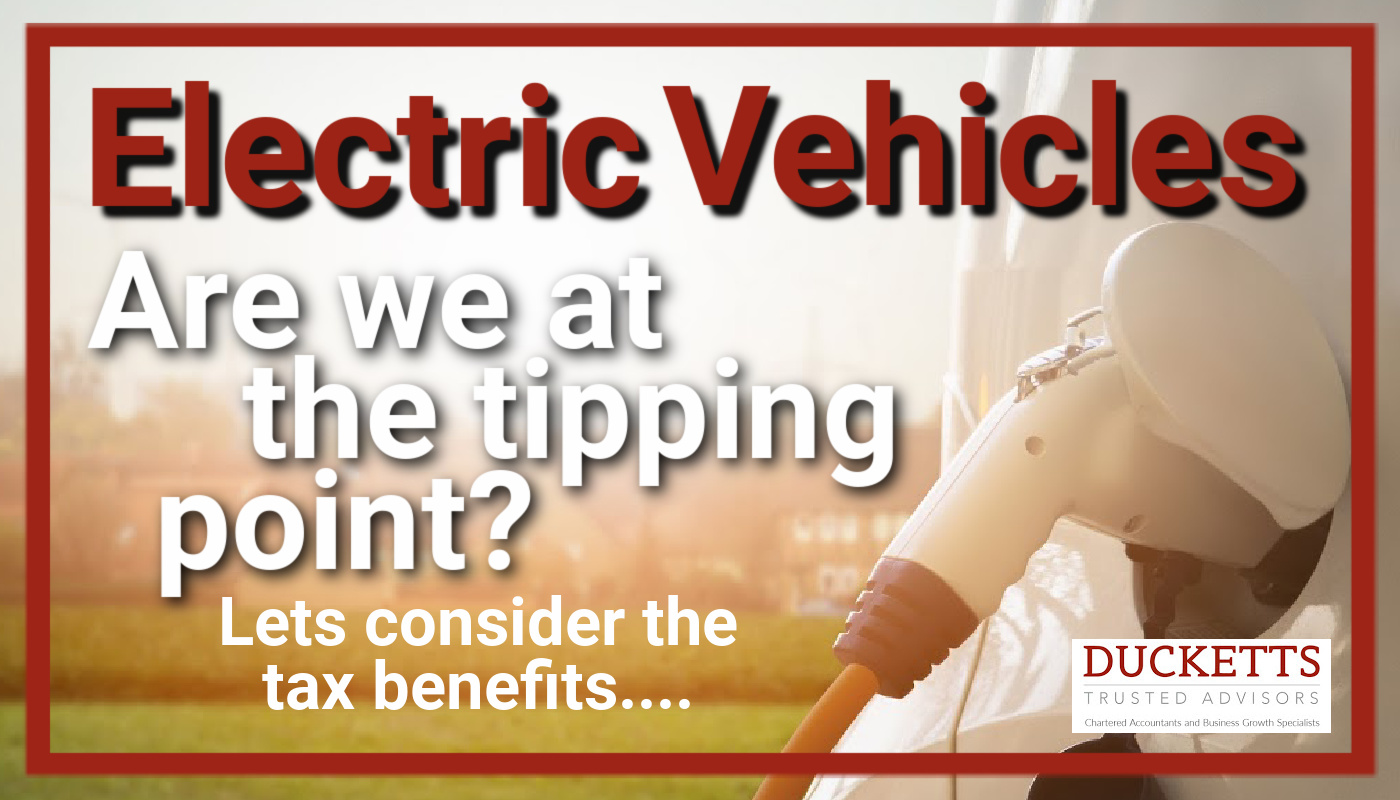Electric Vehicles - Are we at the tipping point?
Published:

Let’s consider the tax benefits....
The move to Electric Vehicles (EV) is gathering pace – the manufacturers are making major moves towards ‘all electric’ production (JLR and Ford have just announced plans to be all-electric within 10 years) and the Government are providing tax benefits.
The incentives that are now available for EV mean that, for businesses and employees, going electric is becoming cheaper. EV’s are also (allegedly) kinder to the environment so should result in a more sustainable future for all.
So are we at the tipping point for EV?
In Herefordshire, there are 63 public EV charging points and 876 EV’s (as of January 2021, according to the Department for Transport).
The available tax benefits will encourage more of us to move to EV’s:
- Directors and employees who drive fully electric company cars will have a nil benefit in kind tax charge for 2020-21 (it was 16% of the list price in 2019-20).
- That benefit in kind charge will increase to 1% for 2021-22 and to 2% for 2022-23, 2023-24 and 2024-25.
- The Vehicle Excise Duty rates for all fully electric vehicles has been reduced to nil until at least 2025.
- There is also a government grant to encourage the purchase of EV’s. It’s capped at £3,000 and restricted to 35% of the purchase price of a plug-in electric car. For electric vans, the grant is 20% of the purchase price up to a maximum of £8,000.
- If a business installs EV charging points at the workplace they can claim 100% first year allowances for the cost. There is then no taxable benefit in kind for employees who charge their electric cars at the workplace.
- From April 2021 there will be a zero benefit charge for employees who drive fully electric (and 2 seat pick-up trucks, etc.) and use them privately.
There are other benefits, including access to Clean Air Zones and exemption from congestion charges. And the EV Charging Infrastructure is expected to grow rapidly.
Finally, range anxiety is much less of an issue than it used to be. Most EV’s now average 180 miles on a single charge, which covers more than 80% of normal driving needs. An efficient charger at home and / or work is thought to minimise the risk of running out of charge.
There’s lots of detail behind the key points above and lots to think about – we’re here to help and we’re happy to talk through specific examples and scenarios.
Latest Posts
The Budget 2025
Welcome to the Team, Adam Wright!
Volatile, Uncertain, Complex and Ambiguous.
Meet The Team - Phil Taylor
Tax Tips 2025

